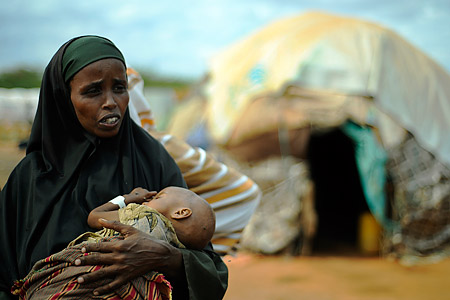
A displaced Somali woman cradles her severely emaciated child at the Dadaab Internally Displaced People (IDP) camp in eastern Kenya, July 23, 2011 (Photo: Tony Karumba / AFP / Getty Images)
The word ‘famine’ may be a familiar one, but it is not thrown around lightly by the people who decide when there is one. The fact that most of us today probably associate the term with the 1984 crisis in Ethiopia is testament to its exceedingly careful dispensation; to use it too often would dilute its power to command the attention of the press and governments around the world. Famines don’t happen overnight, but when the United Nations declares one, those governments are expected to pay attention – and help pay to get the situation under control.
On Wednesday, the U.N. declared two regions in southern Somalia as being in the midst of a famine. It’s the first time the word has been used in that country in nearly 20 years and the first time it’s been employed anywhere in the 21st century. The famine comes after months of the worst drought in East Africa in more than half a century, and is affecting about 3.5 million people around the country, most of whom are in the south. Over 165,000 Somalis have already fled to Kenya to get access to food and water; every day, over 1000 refugees are arriving in Dadaab, the world’s largest refugee camp, pushing conditions there to the limit.

